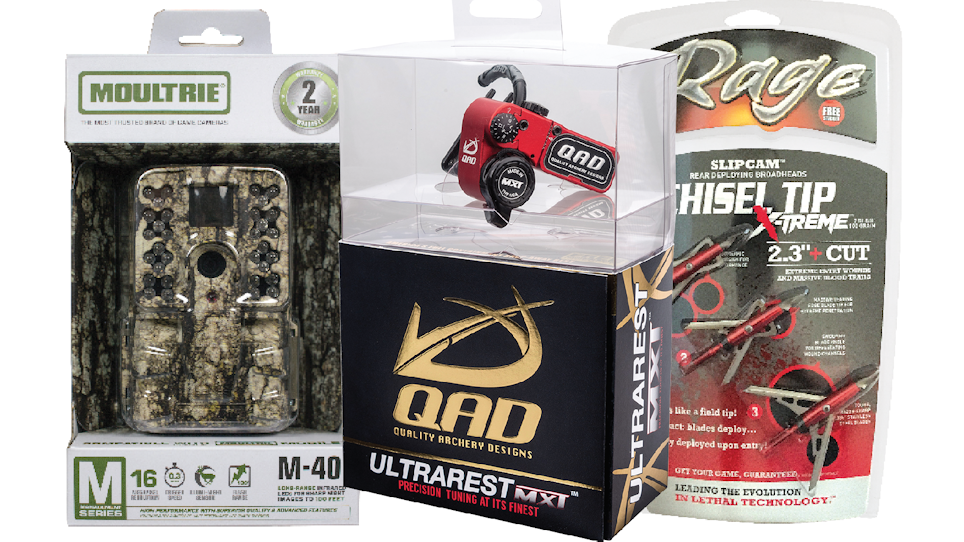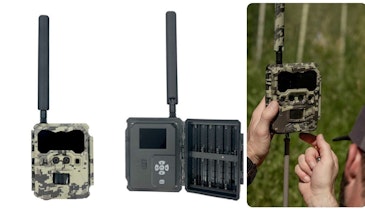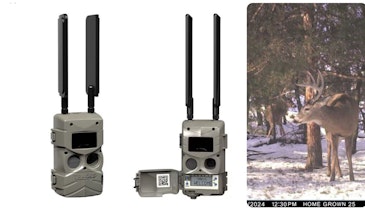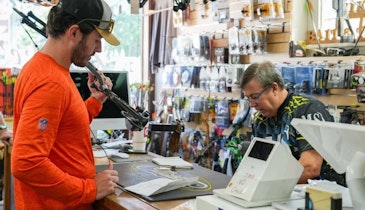In today’s competitive marketplace, manufacturers need to do everything they can to gain an edge over the competition. And with so many quality options available in every product category, one way to ensure products stand out is to wrap them in eye-catching packaging.
Nate Wynalda from Wynalda Packaging spends countless hours developing appealing packaging. Wynalda Packaging specializes in manufacturing packaging that is state of the art and attractive to the eye. “When a consumer walks into a store, if the package looks cool, regardless of the product, the likelihood of the consumer picking the product up off the shelf is much greater,” Wynalda explained.
The importance of packaging
“Packaging is perhaps the last time you have an opportunity to ‘touch’ the consumer,” said Neil Davies, vice president of marketing for Hornady. “It’s at that point that you can make or break the sale. The packaging has to represent the product, the consumer, and the performance expectations and/or enhancement that will be gained from the purchase. Sales can increase or decrease depending on packaging, even on the e-commerce side. At a brick-and-mortar retailer, the consumer can handle the box; on an e-commerce site, they can see the packaging and the product.
“It’s important that the packaging reflects the features and benefits of the product and, perhaps even more importantly, provides a visual representation of the experience the consumer will have with the product. Logos and imagery matter as we’re also selling an experience. Our industry represents freedom in its purest form. We want the packaging to help the consumer identify with that sentiment and our company when they make their decision. The packaging should reaffirm their choice, and then when they use the product, it should solidify the overall experience for them permanently.”
Great Packaging Can Increase Sales
Wynalda Packaging manufactures packaging for many brands in the outdoor industry and for Fortune 500 companies across America, including Disney. Wynalda stressed that when a company wants to grab the attention of a consumer, one of the first things it should consider after the product is designed is what the packaging is going to look like.
“For some reason, many manufacturers don’t think about packaging until they are almost ready to put a product on store shelves, which is a mistake,” he said. “Packaging is almost as important as the product it is holding. Research shows that if a consumer picks up a product off a shelf or rack, there is a 40 percent chance they are going to buy the product.”
Rebranding and Packaging
Jeff Southall is a graphic designer for The Outdoor Group. Over the last several years, The Outdoor Group has acquired several brands. Often one of the first tasks on Southall’s plate is to give the packaging and the brand a fresh look.
“I think it is important to have our packaging, our website and our marketing materials consistent across the brand so the customer gets a consistent message,” he explained. “Another thing we’ve done is moved to clear boxes that allow for several layers of marketing material instead of a clamshell which only has one layer of marketing material. Our packages provide more of a customer experience.”
After years of the same old package, one thing any company can do to spruce things up is to change their packaging. A better-looking container, brighter colors, and good marketing materials on the outside and inside of a package can help give a brand a bright new look that customers will get excited about, which could move sales in the right direction.
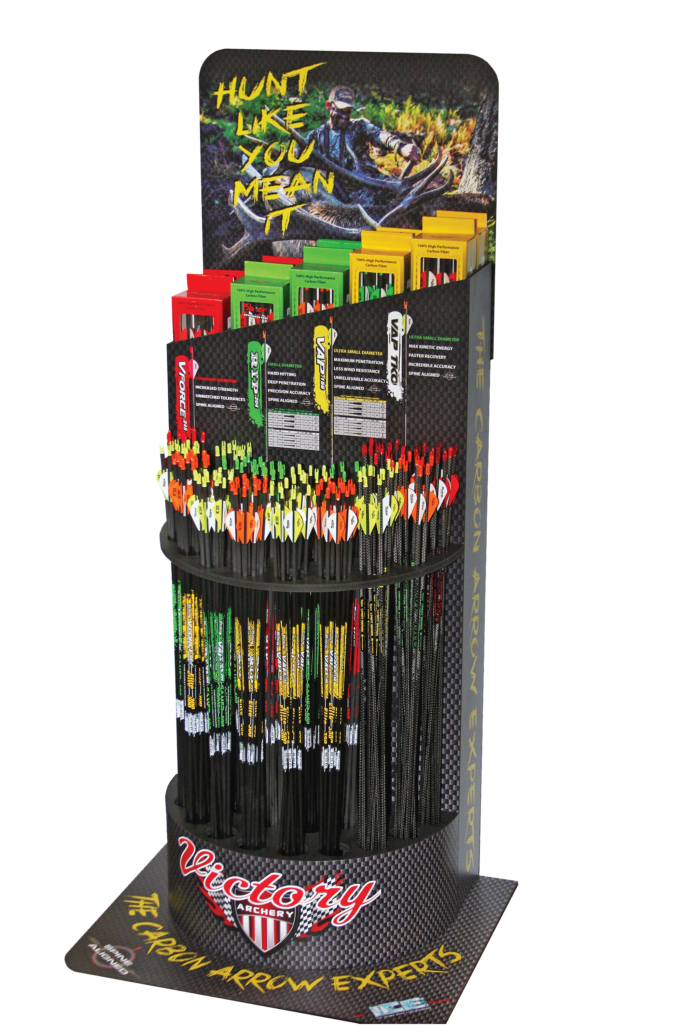
Make Your Product Stand Out
In the outdoor industry, there are many products that look alike on a store shelf. Expandable broadheads, arrows and release aids often don’t look very different from competing products on the shelf. If companies want to separate themselves from other companies, they can put their product in a cool package.
“Not long ago, most companies put their products in a simple clamshell or cardboard box,” Wynalda said. “Those packages don’t make a product stand out on the shelf. A cool package makes the consumer stop and do a double take.”
Let The Package be a Salesperson
Most pro shops only have one or two employees on hand. As a result, when customers enter the store, they often shop by themselves and look around at products for a while before approaching the counter. If a customer is looking at 20 different arrow rests on a wall, the rest that looks cool is often going to be the one they pick up and look at. The package is the salesperson.
“Manufacturers and retailers should pay attention to what kind of package the product is in,” Wynalda said. “Products that come in an awesome package will likely sell better than a product that is in a plain box. Products that are in sharp-looking packages are often perceived by the consumer as a more premium product. Often the manufacturer and the retailer will make a better margin on a product that comes in a nice package, which is why retailers should pay close attention to the products they carry and the package it comes in.”
Interactive Packaging
In the last five or 10 years, the packaging world has changed dramatically. As technology has advanced, so has packaging.
“There are a few different things manufacturers can do to stand out on store shelves,” Wynalda explained. “One thing that works well is packaging a product in a small, clear box that is a different size and shape from everything else in a category. Clamshells all look similar, so a clear box with a coating or color on the box that stands out will really grab attention. A plain cardboard box just doesn’t cut it.”
Other package types Wynalda sees grab attention are packages with movable doors, colorful foils and bright colors. “We have found doors that open on a package and snap shut with magnets after the customer has looked at the product really capture people’s attention. Customer interaction with a package can make a big difference in sales. It is out of the ordinary and gets a second look. The second look is what makes people stop and pick up an item off the shelf or rack.”
Leave Your Crowbar at Home
Christian Costa, the vice president of marketing for The Outdoor Group, recently oversaw a change in the packaging for several of the company’s brands. One reason was so customers could interact with the product.
“We had retailers that would say to us that it would be great if they could pull a Scott release out of a package to let a customer use it and then the release could be put back in the package without the package being torn apart,” Costa said. “We created a package that allows that. This type of package allows the consumer to try it before they buy it, so to speak, which is pretty cool. The feedback from retailers has been great. We even got messages on social media about how much the consumer likes our packaging.”
Bright Colors are King
Ammo boxes have long been relatively boring. A plain black or brown box is what most ammo comes in. Wynalda Packaging works with one particular ammo maker to change that.
“We work with a premium ammo maker that wanted their ammo to stand out when a consumer walks down the ammo aisle, which is a tall task,” Wynalda said. “Ammo looks the same. We added colored foils and bright colors to the box, and it really looks sharp. Little things can make a big difference.”
The color of a package can also make a big difference if a manufacturer wants to stand out. “Yellow and orange really grab people’s attention,” he added. “We see many companies go that route, but black and white are also very popular. A solid black box or a white box with a clear plastic window has a premium feel to it that manufacturers and consumers like.”
What About Cost?
Some companies might think packaging a product in a premium custom package is going to be a lot more money than a regular box. According to Wynalda, that is not always the case. “We have a customer that is a household brand,” he said. “Almost everyone in America would recognize the brand. When they came to us, their package was a small cardboard box with a clear plastic window. We changed the package and provided a premium container made of plastic that is made right here in the U.S.A. The package is designed entirely around their brand, so the package helps build their brand. The price was minimally more expensive, and it helped increase sales significantly. When the consumer sees the package, they automatically recognize the brand. A premium box might add some cost, but it also allows the brand to charge a premium price. The box sends a message that the product is top of the line.”
In the outdoor marketplace, many manufacturers want to be seen as a premium brand, and pro shops often look to differentiate themselves from box stores and large internet retailers by stocking premium products. According to Wynalda, both the manufacturer and the retailer should pay attention to packaging. “Packaging is often an afterthought, but it shouldn’t be. Packaging is a marketing expense; packaging helps sell a product. The packaging tells the consumer a lot about the brand. Is it a premium brand? If it is, it should come in a premium package.”
Looking to the future
Several years ago, the increase in the number of people with smartphones led to a flurry of interest in the use of QR (Quick Response) codes on packaging and in other printed material. The idea was that consumers would simply scan the QR code with their smartphones to view whatever a manufacturer or retailer pointed the QR code toward online. For example, a QR code might take a consumer to a website or to a YouTube video demonstrating the use of a product.
The opportunities seemed endless, but overall QR codes proved disappointing. Consumers weren’t all that interested in pulling out their phones, scanning the code and viewing what often amounted to a commercial.
Can QR codes be effective? Some companies claim to have success with them, particularly when the code is accompanied by a call to action. If consumers know they’re going to see a cool video of a product in use when they scan the code, they’re more likely to do so. If you decide to incorporate QR codes into your packaging, make sure that whatever site the code takes consumers to is optimized for mobile.
Still, savvy manufacturers should keep a close eye on new technology that may appeal to consumers. Millennials rely heavily on their mobile devices for social interaction and researching potential purchases. In addition, many consumers now want in-store shopping to be more of an “experience”; if they just wanted to buy something quickly, they can easily do that online from the comfort of home. It’s likely, therefore, that in the near future someone will develop a user-friendly app or other cool feature that allows consumers to more easily interact with products and brands right on their phones. Know what’s out there so you can stay on the cutting edge.
